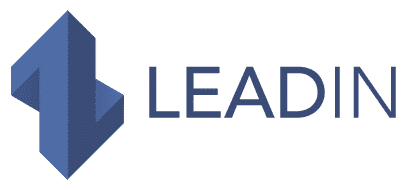Introduction
Prospecting is an essential part of the sales process. It involves identifying and qualifying potential prospects, then converting them into customers. This is the first stage in the sales cycle, and is essential for generating sales.
Presentation of the 3 tools
A. LinkedIn Sales Navigator

LinkedIn Sales Navigator is a powerful tool for finding and contacting qualified prospects on LinkedIn. You can use this tool to :
- Search for prospects by title, industry, company and other criteria.
- Send personalized InMail messages to prospects.
- Track interactions with your prospects.
- Create prospect lists.
To find out more and discover tips and strategies to optimize your prospecting on LinkedIn, consult our complete guide :
LinkedIn Prospecting: The Ultimate Guide
This guide will help you :
- Define your prospecting objectives.
- Identify your personas.
- Create effective InMail messages.
- Use the advanced features of LinkedIn Sales Navigator.
- Analyze your results and optimize your strategy.
Download your free guide today and boost your results!
Benefits for prospecting
- Precise targeting of prospects
- A personalized and engaging approach
- Efficient interaction tracking
- Optimal lead organization
B. Salesforce CRM

Salesforce CRM (Customer Relationship Management) lets you centralize all your customer data, track your interactions and manage your sales pipelines. You can use Salesforce CRM to :
- Store your prospects’ and customers’ contact information.
- Track your interactions with prospects and customers.
- Manage your sales pipelines.
- Automate certain prospecting tasks.
Benefits for prospecting
- A complete view of customer relations
- Precise monitoring of sales progress
- Time-saving and efficient
C. HubSpot Sales Hub

HubSpot Sales Hub is a tool that lets you create landing pages, manage your contacts, send e-mails and track your sales pipelines. You can use HubSpot Sales Hub to :
- Create landing pages to capture leads.
- Manage your contacts and prospects.
- Send personalized e-mails to prospects.
- Track your sales pipelines.
- Create automated workflows.
- Analyze your prospecting performance.
Benefits for prospecting
- Efficient lead capture and conversion: Identify and engage the prospects most relevant to your business, maximize your chances of conversion and optimize your conversion rate.
- Personalized, targeted communication: Develop individualized, relevant interactions with your prospects, tailor your message to their specific needs and reinforce the impact of your communication.
- Precise tracking and pipeline optimization: Measure the effectiveness of your prospecting actions, analyze campaign performance and continuously optimize your strategy to maximize results.
- Automate repetitive tasks: Free yourself from time-consuming, repetitive tasks, automate prospecting processes and devote more time to high value-added actions.
- Better strategic decision-making: Access accurate, actionable data, optimize your resource allocation and define more effective prospecting strategies to achieve your business objectives.
To fully exploit the potential of B2B prospecting and boost your results,
discover the personalized, high-performance solutions from Leadin
Leadin will help you set up an effective B2B prospecting strategy and offer you a range of customized services for :
- Define your objectives and identify your targets.
- Create engaging, relevant content.
- Set up multi-channel prospecting campaigns.
- Analyze your results and optimize your strategy.
Tips to boost your prospecting
A. Define your goals
- Determine the number of new customers required
- Identify the types of customers to prospect
B. Identify your prospects
- Define your ideal customer profile (ICP)
- Search for prospects matching your KPI
C. Creating a compelling message
- Highlight the benefits of your product or service
- Tailor your message to each prospect
D. Personalize your approach
- Adapt the tone and content of your message
E. Track your results
- Analyze open and click rates
- Measure the number of leads generated and converted
Conclusion
By using the 3 tools presented and following the advice given, you can considerably improve your B2B prospecting results. These tools help you save time, be more efficient and generate more qualified leads for your business. Don’t wait any longer to start using them and boost your prospecting!
Appendices
A. Concrete examples of tool use
- LinkedIn Sales Navigator: Create a list of prospects by searching for people who match your ideal customer profile (ICP) using advanced filters. Send a personalized InMail message presenting your solution and its benefits for their business.
- Salesforce CRM: Enter your prospects’ and customers’ information into the CRM to centralize your data and track the history of your interactions. Automate the sending of follow-up emails at defined intervals to maintain contact with your prospects. Use CRM dashboards and reports to analyze your prospecting performance and identify areas for improvement.
- HubSpot Sales Hub: Create an attractive, informative landing page to capture leads in exchange for value-added content (ebook, webinar, etc.). Use automated workflows to send welcome and nurturing emails to captured leads to qualify them and move them forward in your sales cycle. Analyze the performance of your landing page and emails to optimize their effectiveness.
B. Additional resources for prospecting
- Blog articles and practical guides on B2B prospecting
- Webinars and online training delivered by experts
- Customizable message and e-mail templates for your prospecting campaigns
- Comparative lists of the best B2B prospecting tools


